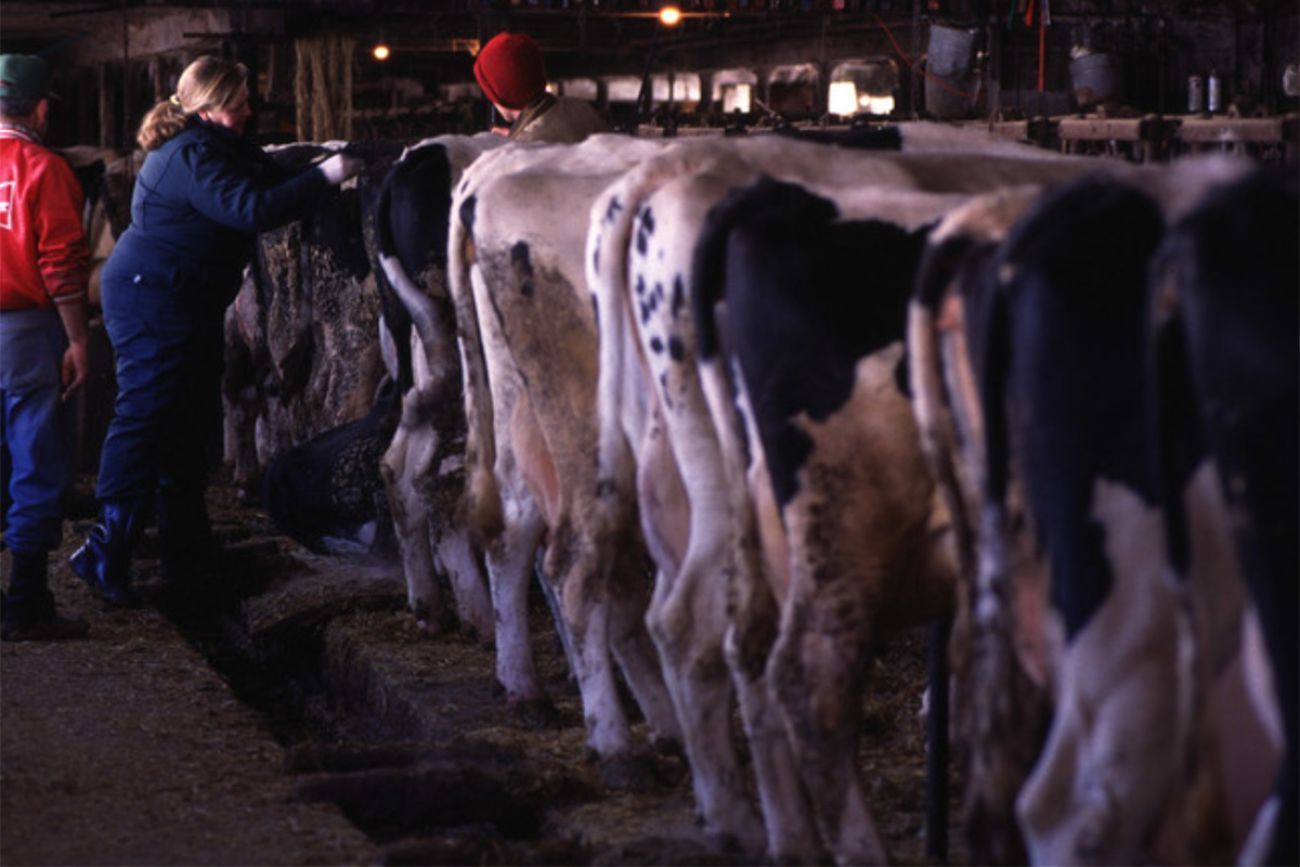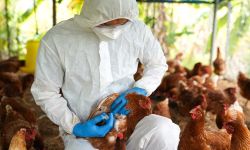Why Michigan cows may hold key to stopping bird flu spread

- Bird flu continues ravage Michigan’s dairy and poultry producers with a highly contagious disease that, in rare cases, humans can contract
- Agriculture officials say the food safety risk for humans is minimal and the focus, moving forward, should be on bettering biosecurity efforts
- Meanwhile, state poultry producers want more clarity on what that means for cattle farmers, concerned about continued spread
LANSING — As bird flu continues to spread among Michigan’s dairy and poultry farms, state agriculture officials say tackling the spread in cattle has proven difficult due to an initial lack of biosecurity measures.
But the state is stepping up those efforts as “a matter of business at this point,” Tim Boring, director of the Michigan Department of Agriculture and Rural Development (MDARD), told reporters Wednesday
The department is “taking a lot of proactive steps … to make sure that we’re protecting workers’ health, human health, in all of this,” he said, noting a recent order requiring farmers to aggressively clean equipment and disinfect items used to segregate possibly infected animals.
Boring’s remarks came Wednesday following lengthy testimony before the House and Senate agriculture committees, where he addressed the state’s ongoing attempt to limit the spread of a highly pathogenic avian flu.
RELATED:
- Bird flu found in hens at Michigan’s top egg producer
- Nation’s third human bird flu case detected in Michigan
- Michigan farmers must step up bird flu fight under new emergency order
Michigan is one of 12 states currently dealing with bird flu, seeing infections so far in 25 cattle herds, seven commercial poultry sites and one “backyard flock.”
Two Michigan farmworks have contracted the virus – the most in the nation, to date – but Boring said both have recovered. He declined to weigh in on whether there should be mandatory testing of farmworkers.
The U.S. Centers for Disease Control and Prevention currently recommends farm workers get tested if they have flu symptoms. The state is recommending season flu vaccinations for people working on poultry or dairy farms.
Farmworker testing for bird flu is more of a “public health topic,” Boring said, noting the agriculture department is focused on the movement of people and vehicles as the virus emerged within closed cattle herds.
“We know the dairy cows aren’t visiting chicken farms,” he added, “and they’re not visiting turkey facilities, so there’s something else moving the virus between those two types of operations.”
Michigan is several years into a highly pathogenic flu targeting its wild and farmed bird populations, Boring added, so containment measures with respect to these farms have been in place for years. The same cannot be said for cattle farming, which is working to implement similar protections.
That’s a concern for poultry farmers, who this week urged lawmakers to ensure Michigan is taking “simple, common-sense measures” for cattle “that have been adopted in other states, but are not being adopted – and from what we can tell – are not even being considered in Michigan.”
When Minnesota had a single dairy cow herd infected with bird flu, it immediately took biocontainment measures to prevent spread, Attorney Peter Ruddell wrote in a Wednesday letter for the Michigan Allied Poultry Industries.
That included destroying any milk a sick cow produces and quarantining the infected for 30 days after their last positive test.
Requests for similar containment measures have “mostly been ignored” in Michigan, “despite our state having 25 times the number of positive herds than Minnesota,” Ruddell alleged.
The bird flu has hit Michigan harder than most states, Ruddell added, telling lawmakers that 30% of all affected dairy herds in the nation are in Michigan.
Asked about those critical comments from the poultry industry, Boring said the state agriculture department continues “to assess and reassess our approaches on a number of different aspects.”
“We know that there are some unique transmission pathways of this virus under poultry farms in ways that we hadn't seen over the last several years,” he said. But that’s “really where we continue to focus our efforts on addressing those known transmission vulnerabilities and prioritizing that work.”
Boring also praised coordination efforts between the state, the U.S. Food and Drug Administration, U.S. Department of Agriculture and the CDC, saying various government efforts are “working as intended and protecting animal and public health as desired.”
On March 29, a dairy herd in Montcalm County was the first to contract bird flu in Michigan.
The number of infections has sharply risen since then, with bird-flu infected cattle now identified in 10 Michigan counties, according to MDARD. Four counties — Ottawa, Ionia, Gratiot and Newaygo — have infected poultry flocks.
Boring in May issued an emergency determination that required farmers to establish “robust biosecurity practices” to help stop further outbreaks among Michigan’s cattle and poultry producers.
One of the key differences between how the two animals handle the virus, Boring said in testimony, is that the disease is nowhere near as lethal to cattle as it is to poultry. That presents a different challenge: understanding how transmission of bird flu worked in a completely different animal, he said.
Those who visit farms, including transient farmworkers, “are a highly suspect vector of this disease across the state,” he added.
See what new members are saying about why they donated to Bridge Michigan:
- “In order for this information to be accurate and unbiased it must be underwritten by its readers, not by special interests.” - Larry S.
- “Not many other media sources report on the topics Bridge does.” - Susan B.
- “Your journalism is outstanding and rare these days.” - Mark S.
If you want to ensure the future of nonpartisan, nonprofit Michigan journalism, please become a member today. You, too, will be asked why you donated and maybe we'll feature your quote next time!




